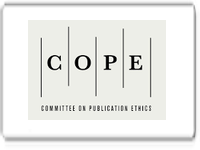Aplicaciones de la fluorescencia con verde de indocianina en anastomosis de cirugía colorrectal: una revisión bibliográfica.
DOI:
https://doi.org/10.56048/MQR20225.7.3.2023.2997-3027Palabras clave:
Inmunofluorescencia, verde de indocianina, cirugía colorrectal robótica, ICG, Cirugía laparoscópica.Resumen
Introducción: Durante una cirugía intestinal uno de los desafíos más importantes es mantener la vitalidad intestinal determinando su viabilidad para evitar complicaciones como resección intestinal (1). La fuga anastomótica (LA) sigue siendo la complicación más temida, con una frecuencia de hasta el 30% en centros de no gran volumen (2). La angiografía con fluorescencia ICG podría ser un método objetivo y no invasivo para evaluar la viabilidad intestinal y determinar correctamente la extensión de la isquemia (3). Objetivo general: Analizar la eficacia de la aplicación de la fluorescencia verde de indocianina en la cirugía de colon y recto mediante una revisión bibliográfica. Metodología: Revisión bibliográfica tipo narrativa en estudios, metaanálisis, revisiones sistemáticas, ensayos clínicos controlados, estudios de cohortes, revisiones bibliográficas que reporten el papel de la fluorescencia verde de indocianina en la cirugía colorrectal desde 2018 a 2023, en los idiomas inglés y español. Resultados esperados: Se espera eficaz la aplicación de la fluorescencia verde de indocianina en la cirugía de colon y recto.
Descargas
Métricas
Cited
DOI: 10.56048![]()
Citas
Gould J. Instrumentos y dispositivos utilizados en cirugía laparoscópica [Internet]. UpToDate. 2023. [Consultado 30 Jun 2012]. Disponible en: https://0-www-uptodate-com.biblioteca-ils.tec.mx/contents/overview-of-colon-resection/print?search=CIRUGIA%20DE%20COLON&usage_type=default&source=search_result&selectedTitle=2~150&display_rank=2
Bednarski B. Descripción general de la resección de colon [Internet]. UpToDate. 2023. [Consultado 30 Jun 2012]. Disponible en: https://0-www-uptodate-com.biblioteca-ils.tec.mx/contents/overview-of-colon-resection/print?search=CIRUGIA%20DE%20COLON&usage_type=default&source=search_result&selectedTitle=2~150&display_rank=2
Paun B, Cassie S, MacLean A, Dixon E, Buie W. Postoperative complications following surgery for rectal cancer. Ann Surg. 2010;251(5):807-18.
Bobel M, Altman A, Gaertner W. Immunofluorescence in Robotic Colon and Rectal Surgery. Clin Colon Rectal Surg. 2021;34(05):338-44.
Heald R, Husband E, Ryall R. The mesorectum in rectal cancer surgery the clue to pelvic recurrence. Br J Surg. 2015;69(10):613-6.
Belloni E, Muttillo E, Saverio S, Gasparrini M, Brescia A, Nigri G. The Role of Indocyanine Green Fluorescence in Rectal Cancer Robotic Surgery: A Narrative Review. Cancers. 2022;14(10):2411.
Gessler B, Eriksson O, Angenete E. Diagnosis, treatment, and consequences of anastomotic leakage in colorectal surgery. Int J Colorectal Dis. 2017;32(4):549-56.
Kang C, Halabi W, Chaudhry O, Nguyen V, Pigazzi A, Carmichael J, et al. Risk Factors for Anastomotic Leakage After Anterior Resection for Rectal Cancer. JAMA Surg. 2013;148(1):65.
Kingham P, Pachter L. Colonic Anastomotic Leak Risk Factors Diagnosis, and Treatment. J Am Coll Surg. 2019;208(2):269-78.
Spinelli A, Anania G, Arezzo A, Berti S, Bianco F, Bianchi P, et al. Italian multisociety modified Delphi consensus on the definition and management of anastomotic leakage in colorectal surgery. Updat Surg. 2020;72(3):781-92.
Choi H, Law W, Ho J. Leakage After Resection and Intraperitoneal Anastomosis for Colorectal Malignancy Analysis of Risk Factors. Dis Colon Rectum. 2016;49(11):1719-25.
Lee W, Yun S, Roh Y, Yun H, Lee W, Cho Y, et al. Risk Factors and Clinical Outcome for Anastomotic Leakage After Total Mesorectal Excision for Rectal Cancer. World J Surg. 2018;32(6):1124-9.
Baiocchi G, Diana M, Boni L. Indocyanine green based fluorescence imaging in visceral and hepatobiliary and pancreatic surgery State of the art and future directions. World J Gastroenterol. 2018;24(27):2921-30.
Son G, Ahn H, Lee I, Ha G. Multifunctional Indocyanine Green Applications for Fluorescence Guided Laparoscopic Colorectal Surgery. Ann Coloproctology. 2021;37(3):133-40.
Reinhart M, Huntington C, Blair L, Heniford B, Augenstein V. Indocyanine Green Historical Context, Current Applications, and Future Considerations. Surg Innov. 2016;23(2):166-75.
Watanabe M, Tsunoda A, Narita K, Kusano M, Miwa M. Colonic tattooing using fluorescence imaging with light emitting diode activated indocyanine green A feasibility study. Surg Today. 2009;39(3):214-8.
Trakarnsanga A. Endoscopic tattooing of colorectal lesions Is it a risk-free procedure? World J Gastrointest Endosc. 2011;3(12):256.
Cahill R, Anderson M, Wang L, Lindsey I, Cunningham C, Mortensen N. Near infrared laparoscopy for intraoperative lymphatic road mapping and sentinel node identification during definitive surgical resection of early stage colorectal neoplasia. Surg Endosc. 2012;26(1):197-204.
Ahn H, Son G, Lee I, Shin D, Kim T, Park S, et al. Optimal ICG dosage of preoperative colonoscopic tattooing for fluorescence guided laparoscopic colorectal surgery. Surg Endosc. 2022;36(2):1152-63.
Grosek J, Tomažič A. Key clinical applications for indocyanine green fluorescence imaging in minimally invasive colorectal surgery. J Minimal Access Surg. 2020;16(4):308.
Vettoretto N, Foglia E, Ferrario L, Arezzo A, Cirocchi R, Cocorullo G, et al. Why laparoscopists may opt for three dimensional view a summary of the full HTA report on 3D versus 2D laparoscopy by Società Italiana di Chirurgia Endoscopica e Nuove Tecnologie. Surg Endosc. 2018;32(6):2986-93.
Cassinotti E, Taher M, Antoniou S, Arezzo A, Baldari L, Boni L, et al. European Association for Endoscopic Surgery consensus on Indocyanine Green fluorescence guided surgery. Surg Endosc. 2023;37(3):1629-48.
Pérez O, Pérez A, León D. Isquemia intestinal y fluorescencia con verde de indocianina: su función como herramienta terapéutica a propósito de un caso. Rev Mex Cir Endoscópica. 2021;22(3-4):150-7.
Thompson S, Chang E, Jobe B. Clinical review: Healing in gastrointestinal anastomoses, Part I. Microsurgery. 2006;26(3):131-6.
Ptok H, Marusch F, Meyer F, Schubert D, Gastinger I, Lippert H. Impact of anastomotic leakage on oncological outcome after rectal cancer resection. Br J Surg. 2007;94(12):1548-54.
McDermott F, Heeney A, Kelly M, Steele R, Carlson G, Winter D. Systematic review of preoperative, intraoperative and postoperative risk factors for colorectal anastomotic leaks. Br J Surg. 2015;102(5):462-79.
Karliczek A, Benaron DA, Baas P, Zeebregts C, Stoel A, Wiggers T, et al. Intraoperative Assessment of Microperfusion with Visible Light Spectroscopy in Esophageal and Colorectal Anastomoses. Eur Surg Res. 2008;41(3):303-11.
Meng X, Liu L, Jiang H. Indications and procedures for second look surgery in acute mesenteric ischemia. Surg Today. 2010;40(8):700-5.
Nowak K, Karampinis I, Gerken A. Application of Fluorescent Dyes in Visceral Surgery: State of the Art and Future Perspectives. Visc Med. 2020;36(2):80-7.
Diana M, Halvax P, Dallemagne B, Nagao Y, Diemunsch P, Charles A, et al. Real time navigation by fluorescence based enhanced reality for precise estimation of future anastomotic site in digestive surgery. Surg Endosc. 2014;28(11):3108-18.
Karampinis I, Keese M, Jakob J, Stasiunaitis V, Gerken A, Attenberger U, et al. Indocyanine Green Tissue Angiography Can Reduce Extended Bowel Resections in Acute Mesenteric Ischemia. J Gastrointest Surg. 2018;22(12):2117-24.
Liot E, Assalino M, Buchs N, Schiltz B, Douissard J, Morel P, et al. Does near infrared fluorescence angiography modify operative strategy during emergency procedures. Surg Endosc. 2018;32(10):4351-6.
Spota A, Taher M, Felli E, Morales S, DalDosso I, Moretto G, et al. Fluorescence based bowel anastomosis perfusion evaluation: results from the IHU IRCAD EAES EURO FIGS registry. Surg Endosc. 2021;35(12):7142-53.
Kowalewski K, Seifert L, Ali S, Schmidt M, Seide S, Haney C, et al. Functional outcomes after laparoscopic versus robotic-assisted rectal resection: a systematic review and meta analysis. Surg Endosc. 2021;35(1):81-95.
Sheridan W, Lowndes R, Young H. Tissue oxygen tension as a predictor of colonic anastomotic healing. Dis Colon Rectum. 1987;30(11):867-71.
Boyle H, Manifold D, Jordan H, Mason C. Intraoperative Assessment of Colonic Perfusion Using Scanning Laser Doppler Flowmetry During Colonic Resection. J Am Coll Surg. 2000;191(5):504-10.
Verbeek F, VanDerVorst J, Schaafsma B, Hutteman M, Bonsing B, VanLeeuwen F, et al. Image guided hepatopancreatobiliary surgery using near infrared fluorescent light. J Hepato Biliary Pancreat Sci. 2012;19(6):626-37.
Frangioni J. New Technologies for Human Cancer Imaging. J Clin Oncol. 2008;26(24):4012-21.
Kusano M, Tajima Y, Yamazaki K, Kato M, Watanabe M, Miwa M. Sentinel Node Mapping Guided by Indocyanine Green Fluorescence Imaging A New Method for Sentinel Node Navigation Surgery in Gastrointestinal Cancer. Dig Surg. 2008;25(2):103-8.
Ortiz J, Riojas A, Chapa A, Rangel H, García A, Quevedo E, et al. Angiografía por fluorescencia con verde de indocianina para cirugía de colon y recto. Primera serie reportada en México. Rev Gastroenterol México. 2022;87(1):29-34.
Wexner S, Abu M, Boni L, Buxey K, Cahill R, Carus T, et al. Use of fluorescence imaging and indocyanine green during colorectal surgery Results of an intercontinental Delphi survey. Surgery. 2022;172(6, Supplement):S38-45.
Armstrong G, Croft J, Corrigan N, Brown J, Goh V, Quirke P, et al. Intra operative fluorescence angiography to prevent anastomotic leak in rectal cancer surgery a randomized controlled trial. Colorectal Dis. 2018;20(8):O226-34.
Jafari M, Wexner S, Martz J, McLemore E, Margolin D, Sherwinter D, et al. Perfusion Assessment in Laparoscopic Left Sided Anterior Resection A Multi Institutional Study. J Am Coll Surg. 2015;220(1):82-92e1.
Trastulli S, Munzi G, Desiderio J, Cirocchi R, Rossi M, Parisi A. Indocyanine green fluorescence angiography versus standard intraoperative methods for prevention of anastomotic leak in colorectal surgery meta analysis. Br J Surg. 2021;108(4):359-72.
Vignali A, Gianotti L, Braga M, Radaelli G, Malvezzi L, Carlo V. Altered microperfusion at the rectal stump is predictive for rectal anastomotic leak. Dis Colon Rectum. 2000;43(1):76-82.
Sherwinter D. Transanal Near Infrared Imaging of Colorectal Anastomotic Perfusion. Surg Laparosc Endosc Percutan Tech. 2012;22(5):433-6.
Gröne J, Koch D, Kreis M. Impact of intraoperative microperfusion assessment with Pinpoint Perfusion Imaging on surgical management of laparoscopic low rectal and anorectal anastomoses. Colorectal Dis. 2015;17:22-8.
VanManen L, Handgraaf H, Diana M, Dijkstra J, Ishizawa T, Vahrmeijer A, et al. A practical guide for the use of indocyanine green and methylene blue in fluorescence guided abdominal surgery. J Surg Oncol. 2018;118(2):283-300.
Pryor A, Tushar J, DiBernardo L. Single port cholecystectomy with the TransEnterix SPIDER simple and safe. Surg Endosc. 2010;24(4):917-23.
Degett T, Andersen H, Gögenur I. Indocyanine green fluorescence angiography for intraoperative assessment of gastrointestinal anastomotic perfusion a systematic review of clinical trials. Langenbecks Arch Surg. 2016;401(6):767-75.
Kin C, Vo H, Welton L, Welton M. Equivocal Effect of Intraoperative Fluorescence Angiography on Colorectal Anastomotic Leaks. Dis Colon Rectum. 2015;58(6):582-7.
Wada T, Kawada K, Takahashi R, Yoshitomi M, Hida K, Hasegawa S, et al. ICG fluorescence imaging for quantitative evaluation of colonic perfusion in laparoscopic colorectal surgery. Surg Endosc. 2017;31(10):4184-93.
Blanco R, Espin E. Intraoperative use of ICG fluorescence imaging to reduce the risk of anastomotic leakage in colorectal surgery a systematic review and meta analysis. Tech Coloproctology. 2018;22(1):15-23.
Ris F, Liot E, Buchs N, Kraus R, Ismael G, Belfontali V, et al. Multicentre phase II trial of near infrared imaging in elective colorectal surgery. Br J Surg. 2018;105(10):1359-67.
Liberale G, Bohlok A, Bormans A, Bouazza F, Galdon M, Nakadi I, et al. Indocyanine green fluorescence imaging for sentinel lymph node detection in colorectal cancer A systematic review. Eur J Surg Oncol. 2018;44(9):1301-6.
Bedyńska M, Szewczyk G, Klepacka T, Sachadel K, Maciejewski T, Szukiewicz D, et al. Sentinel lymph node mapping using indocyanine green in patients with uterine and cervical neoplasms: restrictions of the method. Arch Gynecol Obstet. 2019;299(5):1373-84.
Villegas E, Jimenez J, Jimenez V, Diaz A, Faes R, Otero A, et al. Performance of Indocyanine green for sentinel lymph node mapping and lymph node metastasis in colorectal cancer a diagnostic test accuracy meta-analysis. Surg Endosc. 2020;34(3):1035-47.
Amin M, Greene F, Edge S, Compton C, Gershenwald J, Brookland R, et al. The Eighth Edition AJCC Cancer Staging Manual Continuing to build a bridge from a population based to a more “personalized” approach to cancer staging The Eighth Edition AJCC Cancer Staging Manual. CA Cancer J Clin. 2017;67(2):93-9.
Chand M, Keller D, Joshi H, Devoto L, Rodriguez M, Cohen R. Feasibility of fluorescence lymph node imaging in colon cancer FLICC. Tech Coloproctology. 2018;22(4):271-7.
Nishigori N, Koyama F, Nakagawa T, Nakamura S, Ueda T, Inoue T, et al. Visualization of Lymph/Blood Flow in Laparoscopic Colorectal Cancer Surgery by ICG Fluorescence Imaging. Ann Surg Oncol. f 2016;23(S2):266-74.
Nagata J, Fukunaga Y, Akiyoshi T, Konishi T, Fujimoto Y, Nagayama S, et al. Colonic Marking With Near Infrared, Light Emitting, Diode Activated Indocyanine Green for Laparoscopic Colorectal Surgery. Dis Colon Rectum. 2016;59(2):e14-8.
Alius C, Tudor C, Badiu CD, Dascalu A, Smarandache C, Sabau A, et al. Indocyanine Green Enhanced Colorectal Surgery between Being Superfluous and Being a Game Changer. Diagnostics. 2020;10(10):742.
Huang Y, Pan M, Chen B. A Systematic Review and Meta-Analysis of Sentinel Lymph Node Biopsy in Gastric Cancer an Optimization of Imaging Protocol for Tracer Mapping. World J Surg. 2021;45(4):1126-34.
Marano A, Priora F, Lenti LM, Ravazzoni F, Quarati R, Spinoglio G. Application of Fluorescence in Robotic General Surgeryx Review of the Literature and State of the Art. World J Surg. 2013;37(12):2800-11.
Publicado
Cómo citar
Número
Sección
Licencia
Derechos de autor 2023 MQRInvestigar

Esta obra está bajo una licencia internacional Creative Commons Atribución 4.0.
Los autores se comprometen a respetar la información académica de otros autores, y a ceder los derechos de autor a la Revista MQRInvestigar, para que el artículo pueda ser editado, publicado y distribuido. El contenido de los artículos científicos y de las publicaciones que aparecen en la revista es responsabilidad exclusiva de sus autores. La distribución de los artículos publicados se realiza bajo una licencia 



































